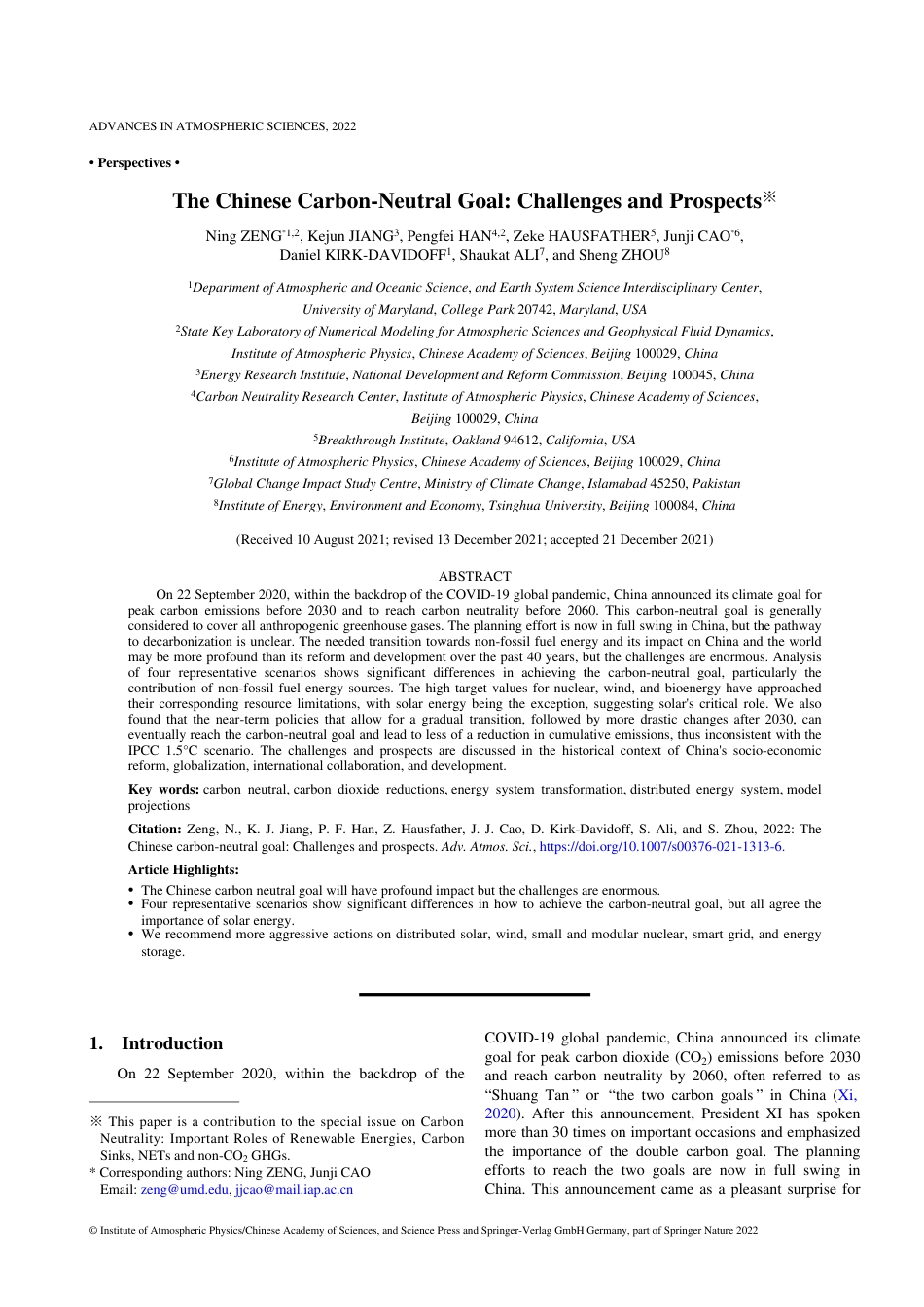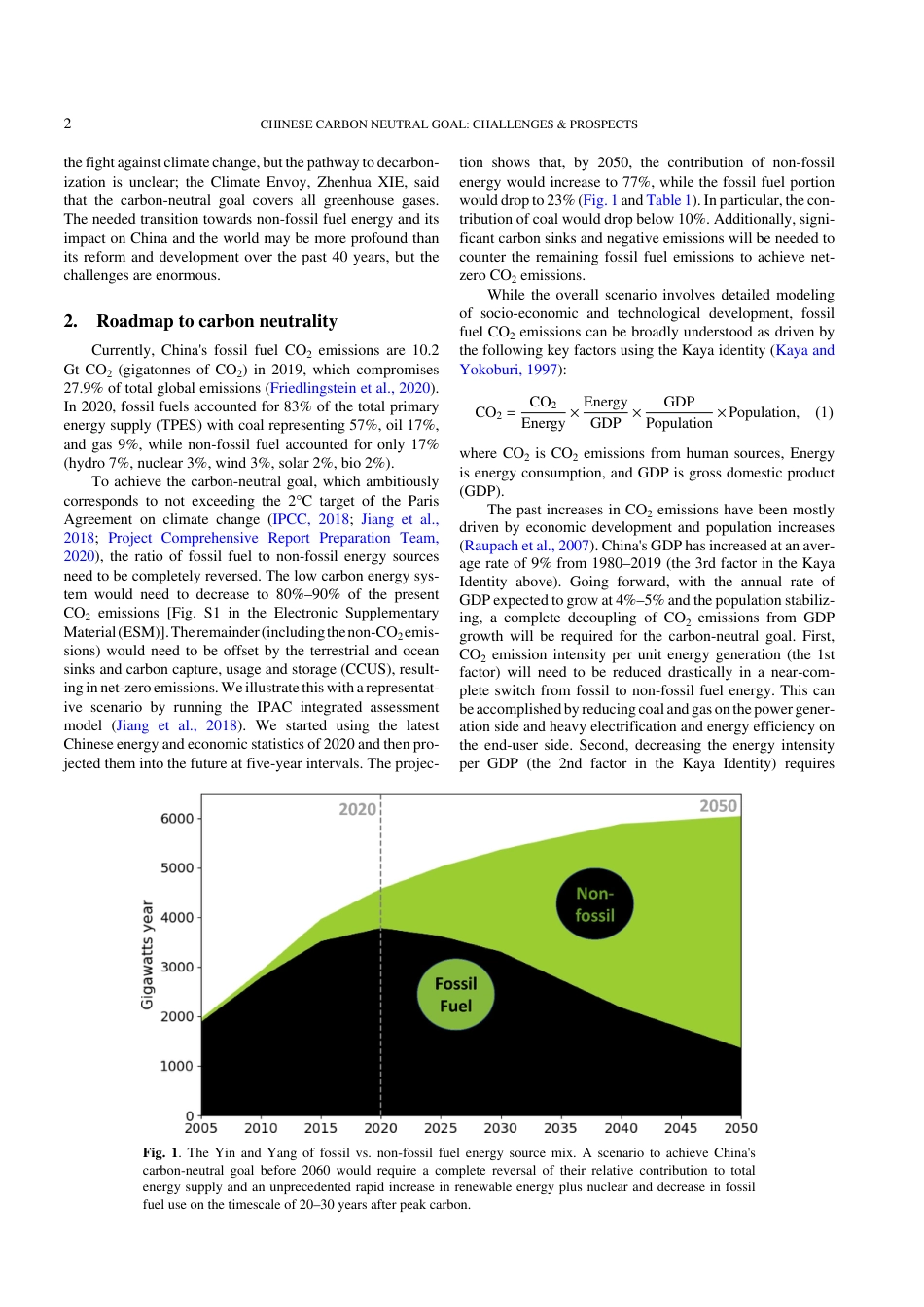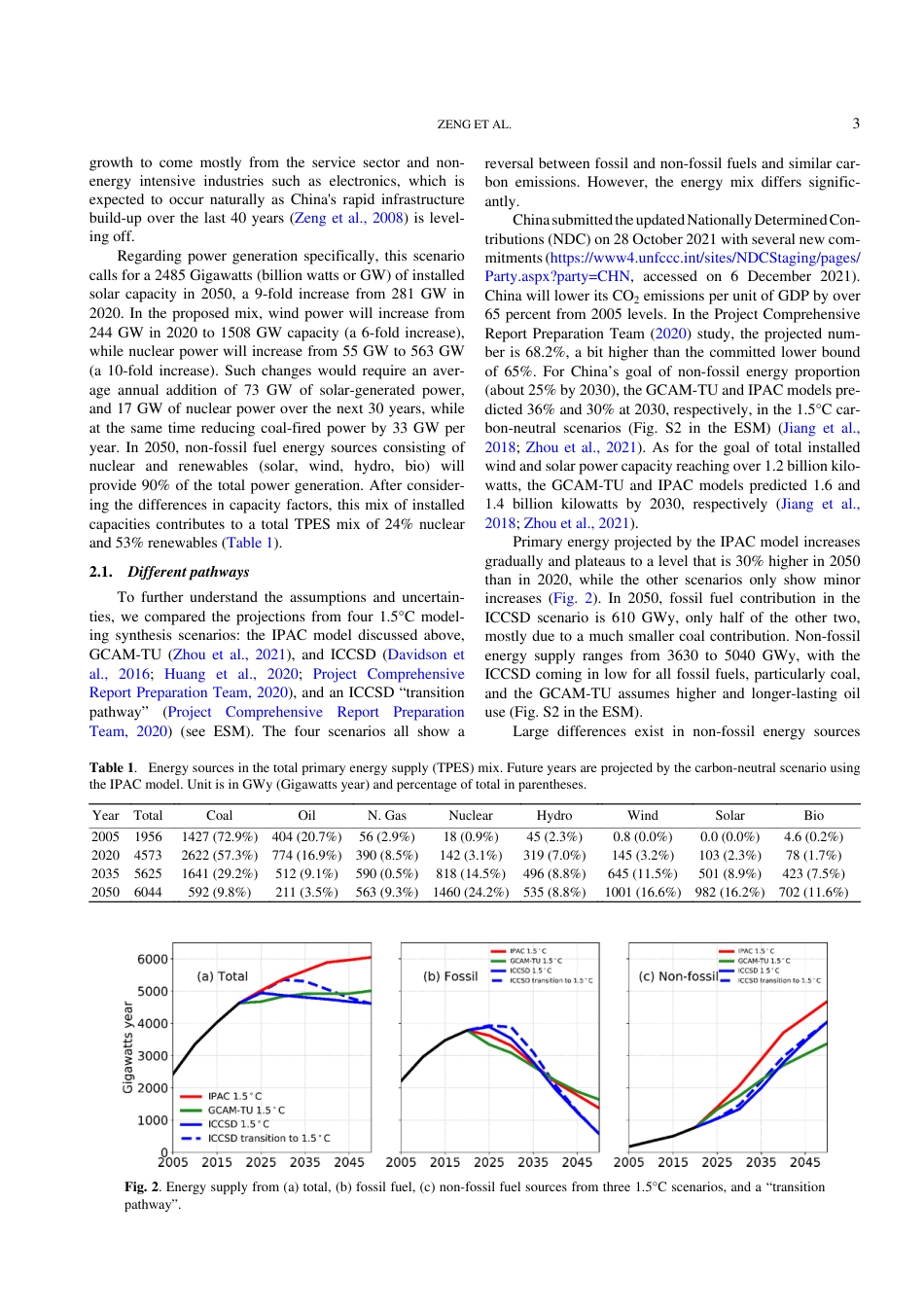The Chinese Carbon-Neutral Goal: Challenges and Prospects※Ning ZENG*1,2, Kejun JIANG3, Pengfei HAN4,2, Zeke HAUSFATHER5, Junji CAO*6,Daniel KIRK-DAVIDOFF1, Shaukat ALI7, and Sheng ZHOU81Department of Atmospheric and Oceanic Science, and Earth System Science Interdisciplinary Center,University of Maryland, College Park 20742, Maryland, USA2State Key Laboratory of Numerical Modeling for Atmospheric Sciences and Geophysical Fluid Dynamics,Institute of Atmospheric Physics, Chinese Academy of Sciences, Beijing 100029, China3Energy Research Institute, National Development and Reform Commission, Beijing 100045, China4Carbon Neutrality Research Center, Institute of Atmospheric Physics, Chinese Academy of Sciences,Beijing 100029, China5Breakthrough Institute, Oakland 94612, California, USA6Institute of Atmospheric Physics, Chinese Academy of Sciences, Beijing 100029, China7Global Change Impact Study Centre, Ministry of Climate Change, Islamabad 45250, Pakistan8Institute of Energy, Environment and Economy, Tsinghua University, Beijing 100084, China(Received 10 August 2021; revised 13 December 2021; accepted 21 December 2021)ABSTRACTOn 22 September 2020, within the backdrop of the COVID-19 global pandemic, China announced its climate goal forpeak carbon emissions before 2030 and to reach carbon neutrality before 2060. This carbon-neutral goal is generallyconsidered to cover all anthropogenic greenhouse gases. The planning effort is now in full swing in China, but the pathwayto decarbonization is unclear. The needed transition towards non-fossil fuel energy and its impact on China and the worldmay be more profound than its reform and development over the past 40 years, but the challenges are enormous. Analysisof four representative scenarios shows signi...



